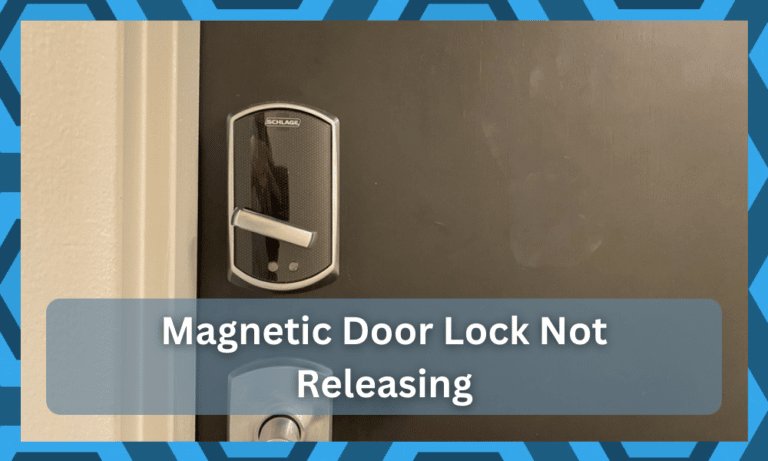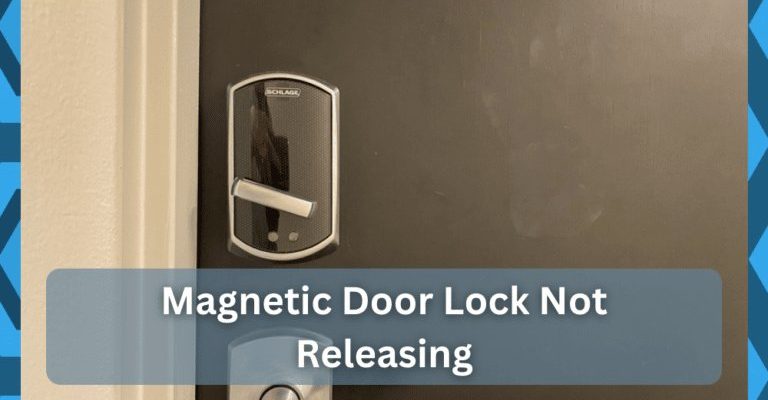
So, whether you’re dealing with a magnetic latch on a sliding door, garage door, or even a smart home entry, understanding how these systems work and how to fix them is key. Think of it as diagnosing a small problem before it turns into a bigger headache. Let’s dive in and look at some common reasons your magnetic door latch might not be engaging and how you can fix them.
Understanding How Magnetic Door Latches Work
Magnetic door latches function through the use of a strong magnet that keeps the door securely shut. Picture a refrigerator magnet—when it’s close to metal, it sticks. In a magnetic door latch, the magnet is paired with a metal plate attached to the door frame. When the door closes, the magnet pulls the plate, holding the door tightly in place. So, when it doesn’t engage, it can feel like something is off in this simple, yet effective, relationship.
Knowing how they work can help you identify the issue. Is it the magnet? The alignment? Or maybe it’s something more technical, like wiring or batteries? Here’s what to keep in mind: many magnetic latches operate on either a manual or electronic system. If your system is electronic, it may involve a remote control or smart feature, adding an extra layer of troubleshooting.
Common Reasons for Latch Failure
There are several reasons your magnetic door latch might not engage properly. First off, you could be dealing with misalignment. If the latch and the plate aren’t lined up correctly when you close the door, the magnet won’t connect. This can happen due to weather changes or simply normal wear and tear.
Another common issue is power failure. If your magnetic latch is electronic and uses a remote, a dead battery could be the culprit. You might not even realize your remote isn’t functioning until you try to use it. In some cases, the electronics inside the latch can fail, causing a malfunction.
Lastly, dirt or debris can build up in and around the latch, preventing it from engaging. Just like how a small rock can jam a door, a bit of grime in your latch can disrupt its function.
Step-by-Step: Checking for Misalignment
If you suspect misalignment, take a look at your door. Here’s a simple way to troubleshoot:
- Check the door alignment: Close the door slowly and notice if it fits snugly against the frame. If you see gaps or if it doesn’t close completely, it might be misaligned.
- Adjust the strike plate: If the door isn’t lining up, you may need to adjust the strike plate. Loosen the screws holding it, reposition it slightly, and then tighten the screws back in place.
- Test the latch: Close the door again to see if the latch engages. If it clicks and holds, you’ve likely fixed the issue!
If misalignment isn’t the issue, keep moving through this troubleshooting guide.
Replacing the Battery in Your Remote
If your magnetic latch is controlled by a remote, a dead battery could be a simple fix. Here’s how to replace it:
- Open the remote: Check for a small screw or just slide the back cover off.
- Remove the old battery: Take note of how the battery is positioned so you can place the new one correctly.
- Insert the new battery: Make sure it’s the right type—check the specs in your user manual.
- Close the remote: Snap or screw it back together and test it on the latch.
If your latch still isn’t engaging, it might be time to dig a bit deeper.
Evaluating the Wiring and Electronics
When dealing with magnetic latches that have electronics, wiring issues can be a pain. Start by checking for visible damage:
- Inspect the wires: Look for any frayed or broken wires connected to the latch. Sometimes, a simple tug or pull can reveal issues.
- Check the connection points: Ensure all connections are tight and secure. Loose wires can often lead to intermittent engagement.
- Test the circuit: If you have a multimeter, use it to check the voltage in the circuit. If there’s no power, you’ll need to determine if the issue lies in the power source or the latch itself.
This process can feel a bit daunting, but taking it step-by-step helps clarify what’s going on.
Cleaning the Latch Mechanism
If dirt and grime are the offenders, cleaning the latch is essential. Here’s a quick guide to get you going:
- Gather your supplies: You’ll need a soft cloth, some mild detergent, and perhaps a small brush.
- Wipe down the latch: Use the soft cloth to remove visible dirt. For tougher spots, the mild detergent can help break down the grime.
- Brush hard-to-reach areas: If there are nooks and crannies, a small brush can help get into those tiny spaces.
Keeping your latch clean not only ensures it works properly but can extend its lifespan too.
When to Seek Professional Help
If you’ve tried all the fixes and your magnetic door latch still isn’t engaging, it might be time to call in a pro. Sometimes, the issue could be more complex, like an internal component failure in the latch mechanism itself.
When choosing a professional, look for someone who specializes in door hardware or home automation systems. They’ll have the tools and experience needed to diagnose and fix issues that are hard to spot from the outside.
Wrapping It Up
Dealing with a magnetic door latch that won’t engage can be frustrating, but understanding the possible causes makes troubleshooting more manageable. Whether it’s misalignment, a dead battery, wiring problems, or dirty mechanisms, tackling these issues step-by-step can save you from larger headaches down the line.
By keeping these tips in your toolbox, you’re ready to face any latch challenges head-on. Always remember, if the simple fixes don’t work, there’s no shame in reaching out for professional help. Your home should feel secure, and there are plenty of resources to ensure it stays that way.
